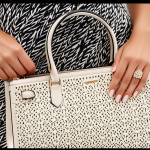The Foundation of Cultural Influence in UK Women’s Fashion
UK women’s fashion has been profoundly shaped by cultural influence stemming from a rich British fashion history and the island’s diverse society. Historically, fashion in the UK has evolved through a dynamic interaction of tradition and external cultural forces. The blending of old customs with new cultural imports creates a unique foundation where heritage plays a critical role.
British fashion history reflects centuries of tradition, particularly visible in styles passed down through generations. Traditional garments and motifs often surface in modern interpretations, preserving a sense of identity. The influence of Britain’s diverse population intensifies this interplay, with various ethnic communities contributing textiles, patterns, and styles that seamlessly merge with established trends.
Also read : What Are the Essential Fashion Pieces Every UK Woman Should Invest In?
This cultural mosaic enriches UK women’s fashion, ensuring its continuous evolution while grounded in tradition. Thus, diversity is not just a background element but a driving force that sustains innovation within the fashion industry, showing how tradition and diversity together set the foundation for contemporary UK women’s fashion trends.
The Impact of Ethnicity and Multiculturalism on Modern Trends
Ethnicity and multiculturalism have become central to shaping contemporary UK women’s fashion, enriching it through an infusion of styles and cultural expressions. Britain’s diverse population fosters a vibrant blend of textiles, colors, and garments originating from numerous ethnic backgrounds. This fusion has notably influenced both high street and designer brands, allowing traditional attire and motifs from immigrant communities to appear in modern collections.
Also to see : How is UK Women’s Fashion Evolving with New Sustainable Practices?
For example, South Asian embroidery techniques and African prints often integrate seamlessly into otherwise Western fashion silhouettes, demonstrating cultural integration in practical design. This incorporation reflects a broader trend where fashion diversity UK-wide celebrates heritage while pushing creative boundaries.
Ethnic influences also extend to accessories, fabric choices, and stylistic details, contributing to a distinct British subcultures’ identity that underscores inclusivity. Such multiculturalism drives innovation, offering UK women more varied and expressive options, thus expanding the scope of personal and collective fashion statements. The continuous dialogue between heritage and new cultural inputs ensures UK women’s fashion remains dynamic and globally relevant.
Globalization and Media’s Role in Fashion Evolution
Globalization has profoundly reshaped UK women’s fashion, accelerating the exchange of ideas and styles across borders. International fashion weeks, from Paris to Milan, introduce British designers and consumers to diverse aesthetics and innovative designs. This global exposure encourages fashion diversity UK, blending international influences with local traditions.
Fashion media acts as a crucial conduit for these trends. Renowned magazines and influential social media platforms rapidly disseminate styles, creating a shared cultural space where global and UK trends merge. Celebrity endorsements amplify this effect, turning runway looks into everyday inspiration.
Social media trends specifically have shortened fashion cycles, compelling UK women’s fashion to evolve faster than ever before. Platforms like Instagram and TikTok enable users to access global styles instantly, fostering a real-time dialogue between global influences and British taste.
Thus, globalization and media together facilitate cultural integration, weaving international and domestic elements into UK women’s wardrobes. This interplay highlights how globalization and fashion media are instrumental in the continuous evolution of Britain’s unique fashion identity.




